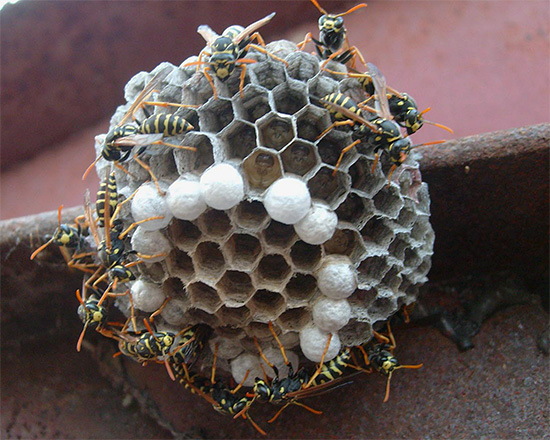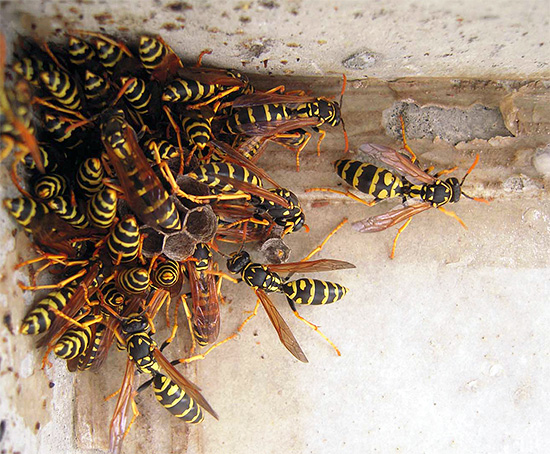
When a wasp stings, first aid must be provided to a person without fail - even though what happened may seem to the victim to be a rather ordinary and insignificant case. For such "brave men" there are several reasons that prove the need for, if not full-fledged first aid, then at least minimal bite treatment.
- Wasp venom always causes acute pain, gradually spreading through the tissues near the bite site. Why endure discomfort for a long time if there are simple and effective methods of relieving pain in such situations?

- Edema, which almost always appears after a bite, can sometimes increase very quickly in size. And if nothing is done, then the injured arm or, for example, the leg may well become almost one and a half times thicker than its original state. Pain from such a pronounced swelling will also be appropriate. Now let's imagine that a wasp has bitten in the throat or neck ... Is it really worth letting everything take its course in such a situation and waiting for the swelling to block the airways or not?

- Wasp venom, especially with multiple insect stings, in some cases can cause general intoxication of the body, accompanied by headaches, nausea, digestive disorders, general agitation, fever and shortness of breath. Such conditions are also very dangerous.

- In some cases, after a wasp sting, an allergic reaction begins to develop, which sometimes proceeds in the most severe form, and with high sensitivity of the bitten one, it can even lead to anaphylactic shock and subsequent death.

Perhaps the above reasons are quite enough to clearly understand: if a person was bitten by a wasp, then it is highly desirable to provide him with at least minimal first aid, and in the future to carefully monitor the general state of health, especially during the first hour.
On a note
The so-called road wasps have one of the most painful bites of any insect in general (only the tropical bullet ant bites them more painfully). And the largest representatives of the wasp family - huge Japanese hornets - according to statistics, several dozen people are killed every year in Japan with their bites. The cause of death of the victims of these insects is, firstly, allergies and anaphylactic shock, and secondly, intoxication of the body in the event of an attack by a large number of hornets.
So, timely first aid for a wasp sting avoids many problems: reduce pain at the site of the bite, contribute to the faster disappearance of edema (or prevent its development at all), and also reduce the manifestations of an allergic reaction. That is why it is desirable to provide assistance to the victim already in the first minutes after a wasp sting.
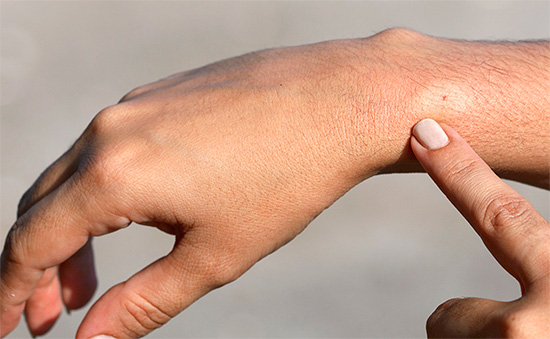
Review
“As a child, wasps often bit me, and then, when I left for the city, probably, up to 25 years, not a single one stung me at all. There was no reason. Recently, one of them stung when the whole family went on a picnic. I didn't even think it would be this bad. Stung on the cheek, I don’t understand what she was doing there.My cheek was smashed, both eyes were so swollen that they closed completely, the pain was hellish, my head was pounding. And I managed to slam the wasp - an ordinary one, not a hornet. They began to apply bottles of water, the wife anointed with some kind of ointment, but there was no sense. The nose stopped breathing altogether, but the swelling did not reach the throat. So I sat, I can’t see anything, I breathe through my mouth, my head is cracking. My wife called my father-in-law, he came with his brother, they took us out in cars, they took me to the emergency room. The doctor gave me an allergy shot and told me to take antihistamine pills. In general, it turned out to be an unplanned sick leave - only three days later my eyes opened.
Oleg, Kazan
Actions in the first minutes after the bite
Perhaps the first thing to do immediately after a bite is to make sure that it was the wasp that stung, and not the bee: some of the fundamental points of first aid after the attack of these insects differ significantly. So, for example, if a wasp has bitten, then you should not waste precious time looking for a sting - unlike a bee, this insect never leaves it in the skin.
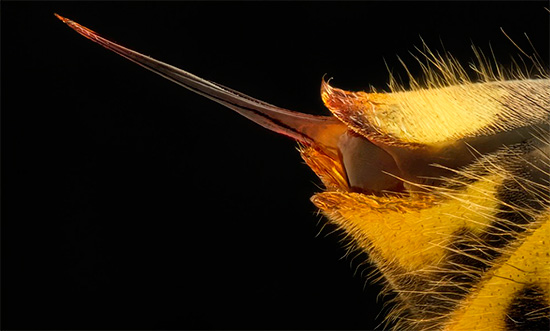
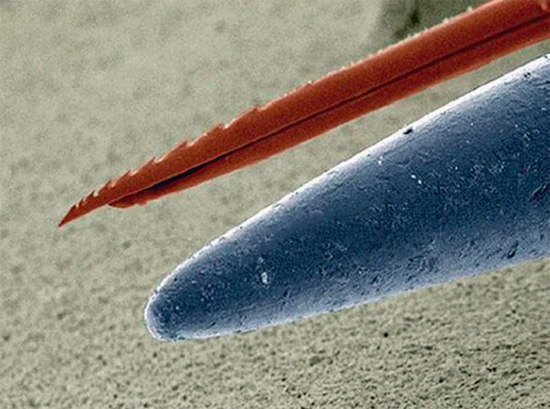
The task of the initial stage of first aid for a wasp sting is to minimize the amount of insect venom injected under the skin at the site of the bite. This can be done in several ways.
To begin with, you need to try to suck out as much poison as possible from the bite site: you can spend at most 1 minute on this, since the skin around the puncture site, as a rule, tightens very quickly, and further attempts will no longer be effective. Do not be afraid of wasp venom getting into your mouth - here it will not cause any harm, it is only important not to swallow it, but to spit it out.
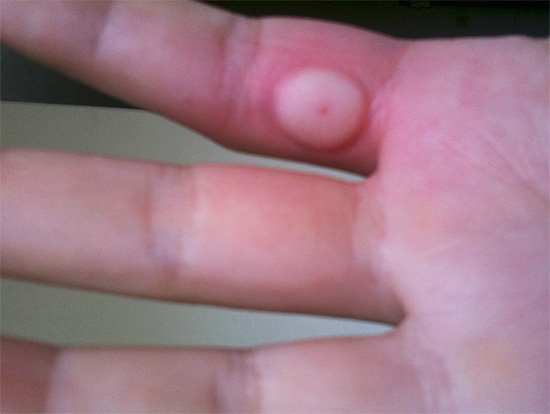
There is another more or less effective way to partially neutralize the insect toxin.Wasp venom has an alkaline reaction, so acids are its neutralizers. In order to reduce the amount of the active form of the poison in the wound, you should apply a cotton swab moistened with 9% table vinegar, a slice of lemon, a piece of apple or orange to it for a minute.
In some cases, especially brave victims cauterize the wasp sting with an extinct match, cigarette or hot coal. Usually exposure to high temperature is considered as a first aid method for snake bites and some poisonous spiders - that is, when there is a real threat to life. When cauterized, the toxins of the poison, which is close to the surface of the skin, disintegrate and simply do not have time to cause any harm.
Such first aid, of course, will give a certain effect in the event of a wasp sting, but it must be clearly understood that this method, firstly, is very painful (sometimes even more sensitive than the bite itself), and, secondly, a trace of the resulting burn may remain for life. Probably the only case when it makes sense to turn to such help is when the victim is obviously prone to severe insect allergies, and he knows about it himself, but does not have a special adrenaline injector with him.

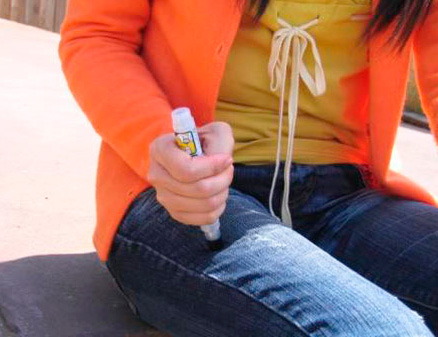
In addition to all of the above actions, at the initial stage of first aid, you can put a kind of wet sugar compress on the wound, which will also draw poison from the wound.
Important!
When providing first aid, in no case should you try to squeeze the poison out of the wound. Such pressure on the bite site will cause increased blood circulation in it and, as a result, a faster spread of poison throughout the body.
Further first aid actions for a wasp sting should be aimed at preventing the poison from quickly entering the bloodstream, reducing the likelihood of developing a severe allergy, and stopping the symptoms of intoxication in the body. For example, to reduce the spread of poison and reduce swelling at the site of the bite, you need to keep a cold compress as long as possible - it can be a piece of ice, frozen meat, or a bottle of cold water. Just under the cold compress, there may be the aforementioned piece of wet sugar, the hypertonic solution of which will additionally draw the poison out of the wound.
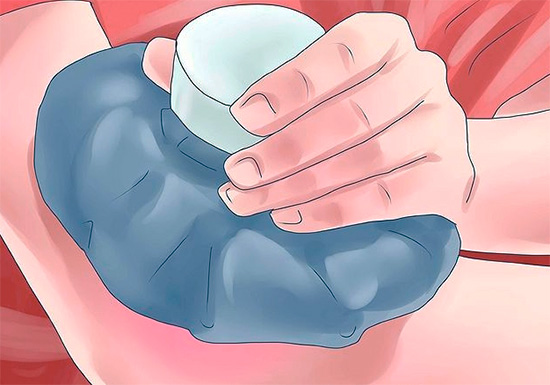
What to do immediately so that an allergy does not start
Usually a person cannot be absolutely sure in advance that he will not have an allergic reaction to a wasp sting. Sensitivity to poison does not depend on the general level of health and physical condition of the body, and with the same probability it can manifest itself in men, women, and children. Therefore, in the event of a wasp sting, first aid for wasps must necessarily include a series of actions aimed at preventing allergies - even in those victims who have never experienced such a reaction of their body before.
The easiest way, after a cold compress has already been applied to the bite site, is to drink a tablet of Suprastin, Diphenhydramine or Tavegil. Sometimes these drugs prevent the allergic reaction from starting at all.
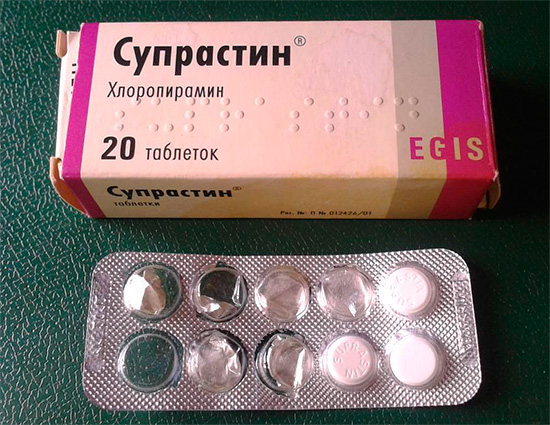
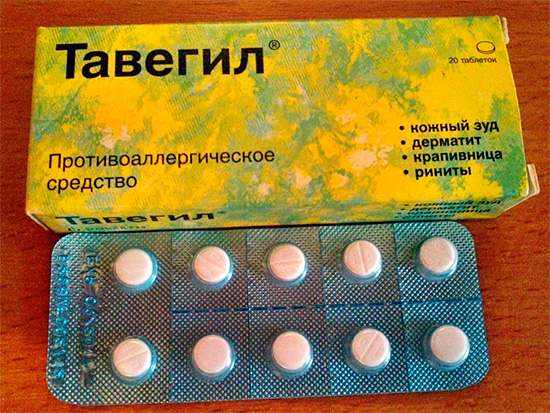
However, in this case, it is advisable to first consult with a doctor, at least by phone, and you must also strictly observe the dosage of the drug taken (it must be prescribed in the instructions for use).It is possible to use more serious drugs (for example, Prednisolone) only with unambiguous and clearly life-threatening symptoms of an allergic reaction.
You need to be especially careful when treating allergies in children - they, as a rule, are prohibited from standard “adult” medicines for such cases. The fact is that these drugs for the child's body can be even more dangerous than the bite itself or uncomplicated allergies after it. You can read about what to do if a child was bitten by a wasp in a separate article on our website (subsection "Wasps").
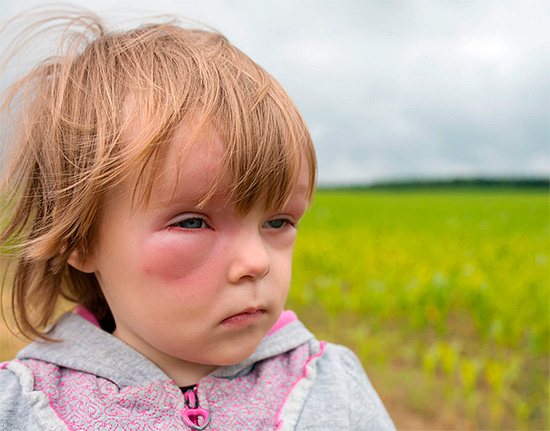
Review
“I have an allergy passport, I always have Suprastin and an autoinjector with adrenaline in my purse. Recently, at the dacha of my son (14 years old), I was bitten by a wasp, I immediately gave him a Suprastin tablet, so that nothing would happen. He refused to drink, saying, they say, nonsense, some kind of wasp sting. Two hours later, he was already lying barely alive, with fever and swelling on the floor of the body. I injected him with this adrenaline, called an ambulance, they pumped him out. They said that without adrenaline, maybe they would not have had time. Now my son has received an allergy passport.”
Irina Vyacheslavovna, Samara
Get rid of itching
After the poison has been neutralized to the maximum, and an antihistamine has been taken to prevent allergies, subsequent assistance with a wasp sting should be aimed at reducing discomfort in the affected area.

As a rule, for the victim, the most significant and noticeable symptoms are itching and swelling. To eliminate them, there are special ointments and balms, which also belong to first aid. For example, here are some of them:
- gel Fenistil;
- Soventol;
- Gardex Family;
- Mosquitol;
- Picnic family.

One of these or similar means should definitely be carried in the first-aid kit when going to the country or to nature. If you plan to travel with a child, you need to take care of purchasing a “children's” drug in advance (for example, Gardex or Mosquitall have a line of such products).

If the wasp sting still took you by surprise, you can use time-tested folk remedies. Of course, in comparison with specialized preparations, they will be less effective, but in the absence of more, they will provide invaluable assistance. So, for the treatment of edema, for example, gruel from garlic or grated parsley root, or alcohol tincture of St. John's wort, is suitable.
Be that as it may, it should be understood that it is often impossible to completely eliminate edema after a wasp sting even with the use of powerful and not always safe medications. In any case: the sooner and more correctly an ambulance is provided for a wasp sting, the less swelling will be and the faster it will pass.
How does an allergy manifest itself and what to do if it starts
An allergy almost never occurs on the first bite of a wasp: for the development of such a reaction, the body must “taste” the poison of this insect at least once in a lifetime. Simply put, before the immediate development of an allergy, a person should ever, for example, in childhood, have already been bitten by wasps.
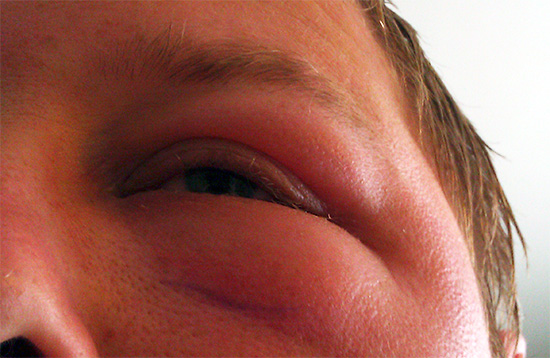
As a rule, the first "meeting" with an insect leads only to a slight swelling, and occasionally to mild intoxication. This often misleads the bitten person: he believes that if nothing terrible happened the first time, then everything will be the same in subsequent cases.
However, this is not at all the case: an allergy can develop both after the second and after the fifth bite. Therefore, if the victim with a wasp sting begins to show the first symptoms of an allergy, you should not hesitate and wait - you need to immediately provide him with emergency assistance.
Allergy warning signs are:
- extensive swelling that goes far beyond the bite site, and sometimes spreads throughout the body;
- urticaria (usually in places of edema);
- headache;
- nausea;
- dyspnea;
- cardiopalmus;
- heartache;
- increase in body temperature;
- confusion.
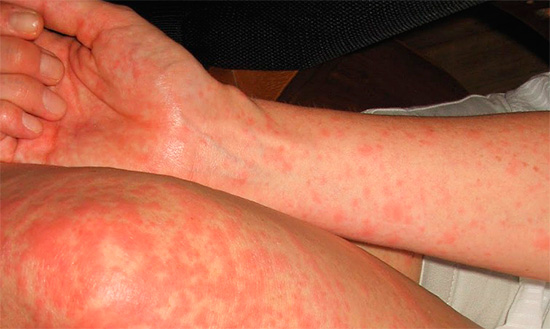
With a normal reaction of the body to a wasp sting, these signs do not appear.
Therefore, if the victim has at least one of the listed symptoms, you should immediately call the ambulance and, having described the situation, follow the doctor's instructions for first aid.
In the event that even a phone call is impossible, you need to act on your own, not forgetting that a person's life may be at stake. First aid for the development of a severe allergic reaction should be provided approximately according to the following scheme:
- It is necessary to give the victim an additional tablet of an antihistamine. It can be both Diphenhydramine and Suprastin already mentioned above, as well as stronger drugs - for example, Desloratadine, Promethazine, Fexofenadine and some others.
- If you have an auto-injector with adrenaline on hand, it should be used immediately.
- Provide plenty of fluids.
Then you need to try to take the victim to the hospital.
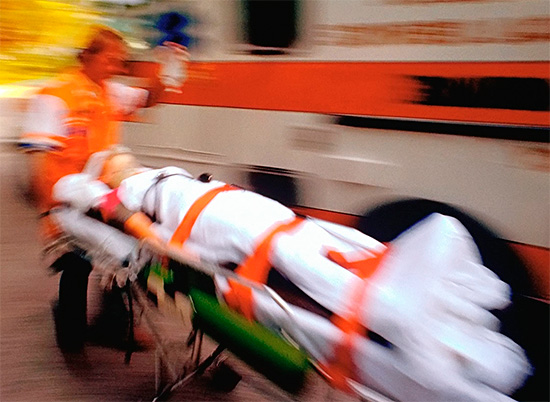
One of the most dangerous consequences of allergies is difficulty breathing.If, due to swelling, the victim cannot inhale or exhale, you should try to carefully insert a thin tube into his throat, which will ensure airway patency.
When this is no longer possible, the only way to ensure breathing is to perform a conicotomy. To do this, the victim's throat is dissected in the area between the thyroid and cricoid cartilages, and a hollow tube is inserted into the resulting hole, allowing breathing.
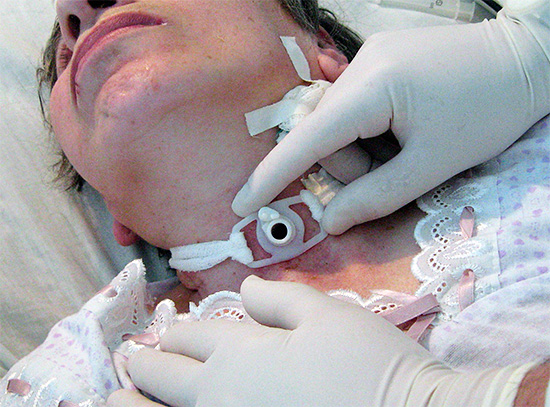
It is important to understand that correctly provided emergency assistance with a wasp sting in most cases guarantees that such complications will not come to the fore, or the hospital staff will deal with them. Difficult situations arise most often precisely because of carelessness and neglect of the bite as a whole.
Actions that cannot be performed
First aid for a wasp sting should be strictly “regulated” - there should not be any extra maneuvers. Incorrect actions after a bite not only waste precious time, but can also cause additional harm to the victim.
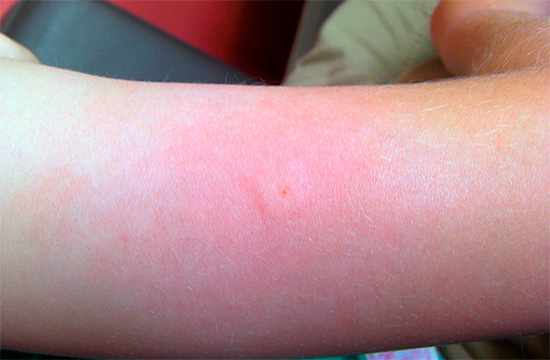
So, for example, with a wasp sting, it is strictly forbidden:
- squeeze the poison out of the wound, because it will not flow out on its own, and due to tissue massage it will only spread faster through the blood (this has already been emphasized);
- apply earth as a cold compress - this can lead to blood poisoning;
- drinking alcohol after a bite - this, like massage, increases blood circulation and promotes the spread of poison throughout the body;
- drink the drug Diprazine - it itself can cause allergies.
And most importantly - you can not ignore the bite itself and hope that nothing terrible will happen.Fortunately, for the most part, the consequences of a wasp sting are really limited to only a slight edema, however, almost all cases of getting into intensive care turned out to be completely unexpected for the victims, and sometimes happened only because people hoped for the Russian “maybe”.
First aid should be provided to the bitten person in any case, and in the future, closely monitor his condition, ensure peace, and, if necessary, take measures to transport him to the hospital.
Remember: a person's life may depend on others in this situation.
Useful information about wasp and hornet stings and insect allergies



